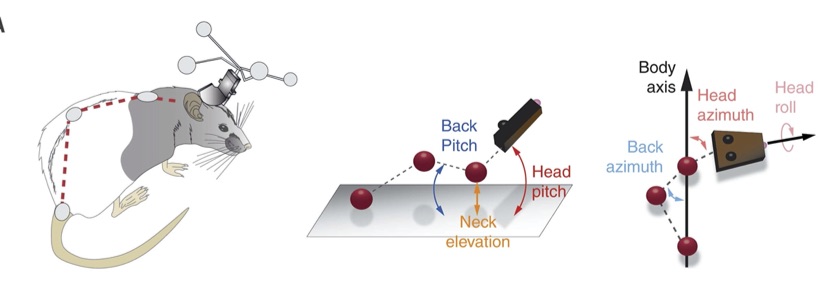/In our species our Locomotive Core has excellent lateral stability, but minimal stability front to back. This facilitates us being able to easily move forward. These motor functions are described as Flexion and Extension. Flexion is the mechanism of action, and Extension is the mechanism of stabilization, or to reset from an action. Flexion/Action describes the primary role of the front plane of the body. Extension/reset describes the primary role of the back-plane of the body.
ARMS AS LEGS
In Gait, the Locomotive Core utilizes the Manipulative Core for cross-lateral counter-rotation to keep our body’s center of gravity near our center of mass. The arms, freed from a primary role in locomotion, developed into a mechanism enabling specialization to a degree otherwise unknown in the living System. However, they continue to play a role in moving, counteracting inertia as the body is propelled by the legs.
THE ROLE OF POSTURE IN MOVEMENT
The complexity of the integration of sensing and sensory processing as it relates to movement and motor planning is explored in this paper:
Efficient cortical coding of 3D posture in freely behaving rats

DEVELOPMENTAL REFLEXES
/
/
DEVELOPMENTAL REFLEXES
/
/
CRAWLING
/
/
SURVIVAL
BIOTENSEGRITY
When examining the Core as purely static anatomy, its physiology does not correlate well with the vectors through which load translates through our bodies. However, if viewed with an understanding of how the principle of Tensegrity is active in biological systems, mass management, as presented here, is clarified. The section on Tensegrity explores this dynamic. The essential concept is that load is managed in our structure by trusses – a triangular distribution network that is self-similar at a scale of over more than six orders of magnitude. The load vectors in the above diagram, presented as lines, actually are more accurately described as a distributed network of tensional and compressional nodes throughout the entire width and breadth of the body.
The section on Tensegrity attempts to bring some clarity to the power of modeling human structure in this way, particularly for therapists working with our bodies:
BIOTENSEGRITY
THERAPEUTIC MOVEMENT
When walking loading shifts so that the knee and hip joint align with the load vector by upward rotation of the opposite side of the pelvis. However, the load continues to cross the midline at the manubrium enabling the contralateral eye dominance.
These mechanisms of movement are associated with:
PRIMATE NEUROPHYSIOLOGY
MANIPULATION CORE
INTELLIGENCE ARCHETYPE
META READING
Overview of discussions on our Locomotive Core:
LOCOMOTIVE CORE
Overview of discussions on our core neurophysiology:
THE FOUR CORES
Overview of the models presented on the Website:
MODELS